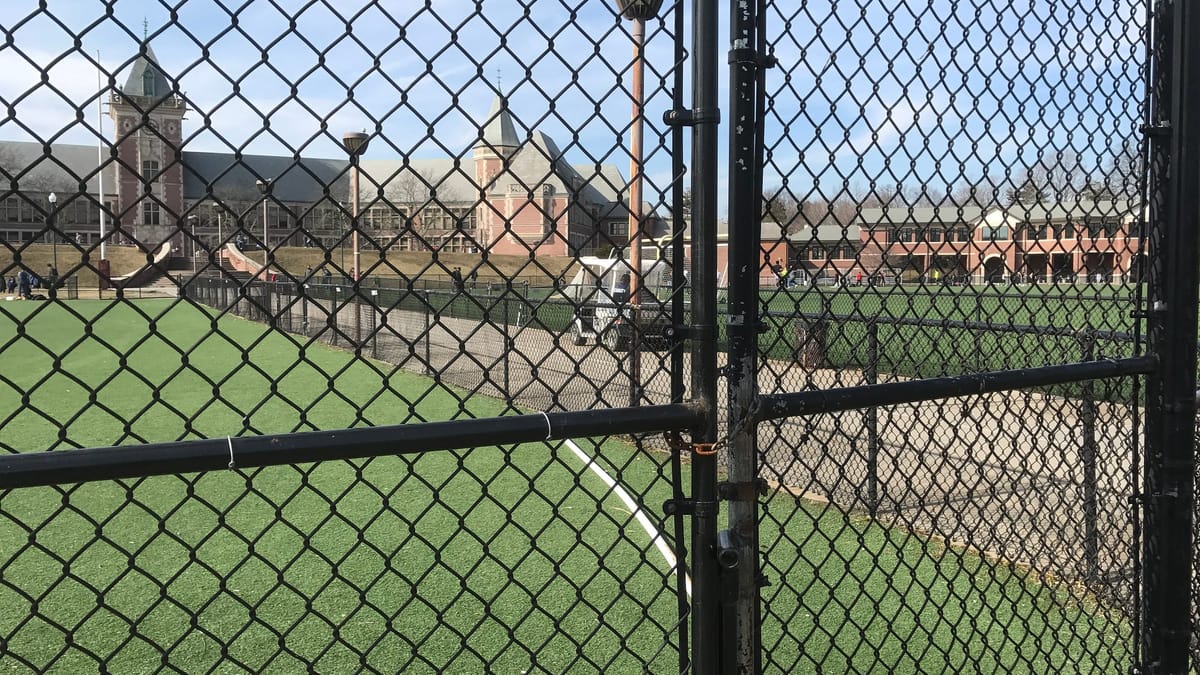New Rochelle High School Newspaper Editor Established Landmark Press Freedoms in 1969 Court Case
Federal Court Struck Down Censorship of the Huguenot Herald, the New Rochelle High School Student Newspaper

NEW ROCHELLE, NY (May 21, 2023) — I was recently reminded by a former Huguenot Herald editor-in-chief that the paper played a critical role in free speech rights for students.
In a landmark 1969 decision, the United States struck down the censorship of a student newspaper at New Rochelle High School in New York. The case, decided less than three months after the U.S. Supreme Court’s 1969 decision in Tinker v. Des Moines Indep. School District, was important for being the first to apply the then-new “Tinker standard” to student media.
Thank you for reading Words in Edgewise. This post is public so feel free to share it.
In the Tinker case, several students in Des Moines, Iowa wore black armbands to school to protest the Vietnam War and were suspended. The students filed a First Amendment lawsuit and the case went all the way to the Supreme Court.
In a 7-2 ruling, the Supreme Court held that students do not “shed their constitutional rights to freedom of speech or expression at the schoolhouse gate” and that school officials could not limit or prohibit speech or expression only on the suspicion that learning could be disrupted. This ruling established students’ rights to free speech in schools and is often referred to as the "Tinker Standard".
Words in Edgewise is a reader-supported publication. To receive new posts and support my work, consider becoming a free or paid subscriber.
On May 15, 1969, U.S. District Judge Charles M. Metzner of the U.S. District Court for the Southern District of New York applied the Tinker Standard to the Huguenot Herald in granting the Plaintiffs' motion for summary judgment, concluding:
This lawsuit arises at a time when many in the educational community oppose the tactics of the young in securing a political voice. It would be both incongruous and dangerous for this court to hold that students who wish to express their views on matters intimately related to them, through traditionally accepted nondisruptive modes of communication, may be precluded from doing so by that same adult community.
The Facts of the Case:
Zucker v. Panitz, 299 F. Supp. 102 (S.D.N.Y. 1969): A group of New Rochelle High School students, led by plaintiff Richard Orentzel, formed an Ad Hoc Student Committee Against the War in Vietnam. The group sought to publish an advertisement in opposition to the war in the student newspaper, The Huguenot Herald, in November 1967, offering to pay the standard student rate. The text of the proposed advertisement is as follows: "The United States government is pursuing a policy in Viet Nam which is both repugnant to moral and international law and dangerous to the future of humanity. We can stop it. We must stop it." The editorial board of the newspaper, which was then headed by plaintiff Laura Zucker, approved publication of the advertisement, but the principal of the school, Dr. Adolph Panitz, directed that the advertisement not be published. The affidavit of plaintiff Orentzel alleges that the committee still desires to publish the advertisement and has been informed that the newspaper would accept it but for the directive of the principal.
Nathan Zucker, on behalf of his daughter Laura Zucker, and Jack Orentzel, on behalf of his son Richard Orentzel, filed a federal lawsuit against Adolph Panitz, as New Rochelle High School principal, James K. Bishop, as President of the Board of Education of New Rochelle, and George C. Clark, as Superintendent of Schools of New Rochelle.
Striking down the school’s censorship, Judge Metzner held that the student newspaper was clearly “a forum for the dissemination of ideas.” After looking at the content of the publication, the court said, “The school paper appears to have been open to free expression of ideas in the news and editorial columns as well as in letters to the editor.” Thus, the First Amendment protected the students’ “nondisruptive” expression.

In a 1985 edition of the Huguenot Herald, a notice was published on the front page which read:
Laura Zucker, editor-in-chief of the Herald some 16 years ago, was distressed to learn that the school administrators who held power then refused to allow students to run a full page, anti-Vietnam War ad. She took her case to court, and in the Zucker v. Panitz decision, the Supreme Court found in favor of the students. This case, together with the Tinker decision, became the corner stone for freedom of the press in high schools throughout the country. It should be comforting to everyone concerned that the Herald has never experienced any attempt on the part of our present administrators to deny us our basic freedom of the press. It's one of the reasons why NRHS Is an outstanding school. Students are allowed to practice democracy the same way it’s taught in our history class.
The Zucker decision was the beginning of almost 19 years of agreement among the courts on student press rights. That changed in 1988 following the Supreme Court’s Hazelwood decision.
The Hazelwood decision refers to the Supreme Court case Hazelwood School District v. Kuhlmeier, which was decided on January 13, 1988. In this case, the Supreme Court held that public school curricular student newspapers that have not been established as forums for student expression are subject to a lower level of First Amendment protection than independent student expression or newspapers established (by policy or practice) as forums for student expression.
In a 5-3 ruling, the Supreme Court held that school administrators could exercise prior restraint of school-sponsored expression, such as curriculum-based student newspapers and assembly speeches if the censorship is "reasonably related to legitimate pedagogical concerns". This decision was a step back for student press and speech rights and declared that students do shed some of their Constitutional rights at the schoolhouse gate.

Since 1988, under various administrations, New Rochelle High School principals have routinely censored students, including the Huguenot Herald. Rather suppressing the speech of students, their speech should be encouraged. And certainly the Metzner decision in Zucker v. Panitz (1969) should be taught to all students in the high school alongside the Kaufman decision in Taylor v. Board of Education of the City School District of New Rochelle (1961).
As publisher of Talk of the Sound, and the Words in Edgewise newsletter, Robert Cox has been willing to — and has — published controversial opinions, including those of New Rochelle students.
SOURCES:
Zucker v. Panitz, 299 F. Supp. 102 (S.D.N.Y. 1969)
Student Press Law Center: Zucker v. Panitz
8 ways a landmark Supreme Court ruling has changed student journalism




